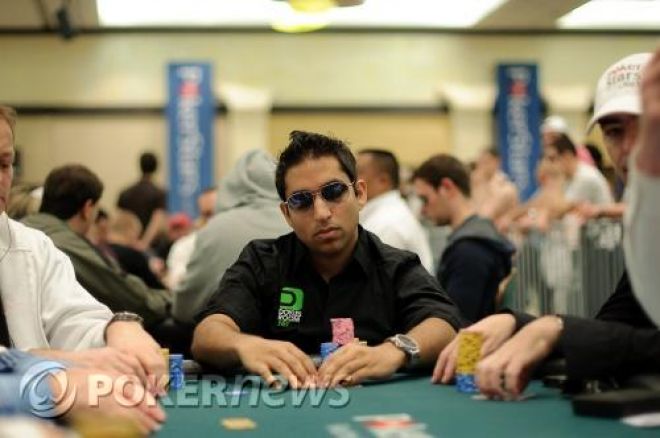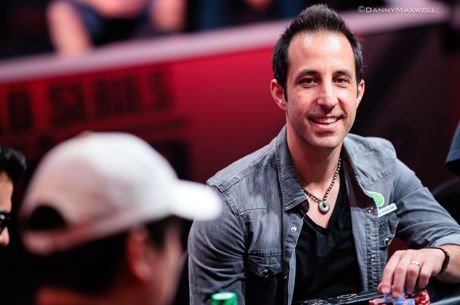Short-stack Tournament Strategy with Amit Makhija Part 1


Brunson 10 member Amit Makhija, also known as “amak316” online, has been one of the most consistent online and live tournament players for the past three years with winnings exceeding $2.4 million. In every tournament he plays, there are ups and downs, and the best pros have to learn to play optimally with every kind of stack size, even a short one.
That brings us to this week’s subject: Short-stack Tournament Strategy
First, let's talk about being short-stacked with some fold equity. If preflop raises are around 2.5 to 3.5 times the blinds, how many big blinds do you generally need to have to still have fold equity over an open raise?
It depends on the open raiser really. Against players that are really bad and don’t have a good grasp of pot odds, you can definitely justify reshoving as short as 10 times the big blind. In general though, I like to have at least 15 times the big blind against competent players that you feel are opening light. People generally tend to find folds with moderate strength hands when they are getting less than 1.75-1 odds.
If you have enough fold equity, what types of hands do you prefer shoving with against players who you think are opening light and?
If I think their range is severely weighted to weak hands, the cards hardly matter if I can increase my stack by a considerable percentage by shoving. If I think they have a weaker than average range hand, but will still call me a fair percentage of the time, I tend to look for hands like small pairs, good broadway hands, and suited connectors because those types of hands play well enough versus the stronger hands in my opponents range that will call my reshove.
What about tighter open raisers who have a smaller range of raising hands but generally fold to three-bets? Do you need to polarize your range or should you not even shove bad hands against these types of players and just wait for a better spot?
Against weaker players, it’s rarely a mistake to polarize ranges because they aren’t thinking that way in general. They are just trying to put you on a specific hand. If you think their range is tight, but they are calling too tight, you can still consider reshoving light. But, in general, tight players are bad candidates for a resteal. There are definite situations to reshove on tight players that often arise in high buy-in tournaments in which people have satellited into and are playing with scared money. These players can sometimes find a fold with hands that are near the top of their range and can be good targets. Things like balancing ranges are only important against the best regulars that you play on a daily basis because they generally are the only people perceptive enough to realize it.
Are there any other situations you are looking for when you have a 15 big blind stack?
A 15x stack is complicated to play at times. In general, I’m looking to reshove, but often it is a stack that you can profitably open shove. In the state of tournament poker today, everyone is looking to resteal against this stack, so when I have 15 times the big blind and there are a lot of tough regulars at my table, it becomes tough to open hands like small pairs, queen-jack suited, and weak suited aces, even in late position because these aren’t necessarily hands you want to call off your entire tournament life on when you are faced with a resteal. The problem is these hands often figure to be the best hand at the table and folding these hands often makes you play entirely too tight. To combat this, a lot of good players in this situation these days are making larger than average open shoves with as much as 20 times the big blind.
To balance this, you also have to often shove your good hands against perceptive players. This has created an interesting dynamic in high buy-in online tournaments where regular players have been shoving a super wide range of hands. The variance in these tournaments is higher than it ever has been because of this dynamic.
That is an interesting dynamic. Does that maybe mean players are starting to consider themselves short-stacked earlier than in the past because they are able to open shove such a wide range?
People are certainly starting to think they are short-stacked earlier than before. It’s pretty interesting to see how online tournaments have evolved over the years. We are beginning to see this evolution in live tournaments as well, but it will be years before they reach the state that online has because of the speed of online poker, it tends to evolve quickly.
What mistakes do you see players making with this sized stack?
The biggest mistake people make on that stack is opening too much and calling off too tight. A random player will often see hands like seven-eight suited, jack-ten suited, king-jack offsuit, ace-deuce through ace-nine, and other hands that look like they have a lot of value, then will get reshoved on and are forced to fold. They also will often raise hands like king-queen that probably have a lot of equity versus their opponents’ reshoving range, and will still fold to the reshove because they think they can "find better spots."
Later this week, Makhija will also discuss playing an even shorter stack of 10 times the big blind, and also demonstrate how these concepts apply to an actual hand. While you're waiting, sign up for an online poker account and work on your game.








